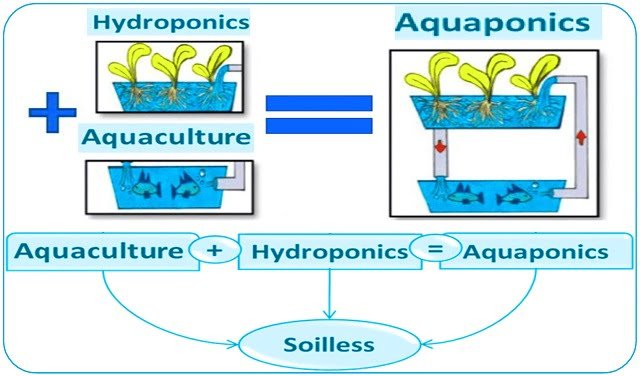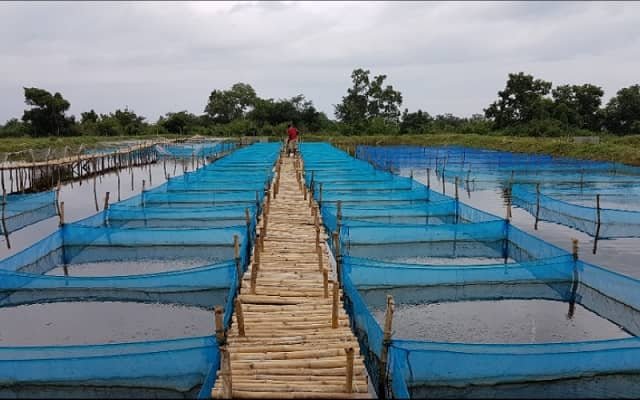
The intensification of production for tilapia and other aquaculture species brings a constant challenge: bacterial diseases, which can compromise fish health and the profitability of the farm.
A recent study conducted in Egypt by researchers from Suez Canal University, the Fish Farming and Technology Institute, and the National Institute of Oceanography and Fisheries (NIOF) has focused on how the type of farming system directly influences which bacteria appear and how resistant they are to antibiotics. The research, published in the journal Aquaculture, compares two popular methods: traditional ponds and modern in-pond raceway systems (IPRS). The results offer a valuable guide for more effective and sustainable health management.
What was compared, and how was it done?
The study was carried out at the WorldFish facilities in Egypt, evaluating two Nile tilapia production systems over six months:
- Traditional pond system: This consists of three earthen ponds of 4200 m² each, with a low stocking density of 4 fish per cubic meter, following conventional practices in Egypt.
- In-Pond Raceway System (IPRS): This intensive method uses only 3% to 5% of the pond area to confine the fish in “channels” or raceways. This allows for a much higher density (200 fish per cubic meter) and better control over the process. The IPRS features constant water circulation and high aeration, while the open area of the pond acts as a waste treatment zone.
During the study, researchers collected 360 tilapia from both systems at two, four, and six months to perform clinical analyses, identify the bacteria present, and test their sensitivity to different antibiotics. It is important to note that no medications or antibiotics were administered during the study period to avoid altering the results.
Different systems, different bacterial risks
The study showed that the type of farming system has a significant impact on the prevalence of specific bacterial pathogens.
In traditional ponds:
- Researchers observed a higher prevalence of Aeromonas sp. and, more significantly, Enterococcus sp. bacteria.
- The prevalence of Enterococcus sp. increased considerably over time, becoming statistically significant at six months (80% in traditional ponds versus 50% in IPRS).
- The fish from these ponds showed more severe clinical signs, such as hemorrhages on the eyes and skin, darkening, reddened fin bases, swelling of the spleen, and a pale liver.
In in-pond raceway systems (IPRS):
- The study recorded a higher incidence of Pseudomonas sp..
- Although the fish density was much higher, the clinical signs of disease were milder, primarily limited to skin darkening, fin rot, an enlarged spleen, and a pale, friable liver.
These findings suggest that traditional ponds, with lower water circulation and higher organic load, may create a more favorable environment for the proliferation of Aeromonas and Enterococcus.
Stay Always Informed
Join our communities to instantly receive the most important news, reports, and analysis from the aquaculture industry.
How do bacteria respond in each system?
One of the most relevant contributions of the study is how the efficacy of antibiotics varies depending on the bacteria’s system of origin.
- Aeromonas sp.: Isolates from IPRS showed significantly higher sensitivity to the antibiotic ampicillin (20%) compared to those from traditional ponds (0%). This suggests that the conditions in IPRS could reduce the development of resistance to this drug.
- Enterococcus sp.: Interestingly, isolates from traditional ponds were 100% sensitive to ceftriaxone, whereas in IPRS, only 20% were. This marked difference indicates that the selective pressures of each environment shape bacterial resistance differently.
- Pseudomonas sp.: In general, no notable differences in the sensitivity of this bacterium were observed between the two systems for most of the antibiotics tested.
The risk analysis confirmed that traditional systems present a higher probability of resistance to key antibiotics like tetracycline and co-trimoxazole for Aeromonas and Enterococcus.
Implications for the tilapia producer
This study not only identifies problems but also offers a solid basis for improving health management strategies in tilapia aquaculture.
- IPRS as a tool for sustainability: Although it requires a greater initial investment, the IPRS seems to offer an environment that reduces the prevalence of key pathogens like Aeromonas and Enterococcus and can mitigate the risk of resistance to certain antibiotics. This could decrease the need for pharmacological interventions.
- System-specific risk management: Producers using traditional ponds should be especially vigilant for Enterococcus infections, particularly in the final stages of the grow-out cycle. On the other hand, those operating with IPRS should implement specific monitoring to control Pseudomonas populations.
- Informed use of antibiotics: Knowing which bacteria are prevalent in a system and their sensitivity profile can guide a more precise and effective treatment choice, avoiding the use of antibiotics that are unlikely to work and reducing the development of resistance.
Conclusion
The choice of an aquaculture system goes beyond stocking density and production. As this research in Egypt demonstrates, the design of the farming system is a crucial factor that shapes the microbial ecosystem, directly influencing fish health and the efficacy of treatments. IPRS are emerging as a more sustainable alternative for controlling certain pathogens and antibiotic resistance, although they require management adapted to their own challenges, such as the higher prevalence of Pseudomonas.
These findings are a step forward in optimizing aquaculture practices in Egypt and other regions, fostering a more resilient, profitable, and safe tilapia production.
Contact
Mohamed Fathi
National Institute of Oceanography and Fisheries (NIOF)
Cairo, Egypt
Email: aquavet@hotmail.com
Reference
Aly, S. M., Abd Allah, O. A., ElBanna, N. I., Abdel-Naeim, N. S., & Fathi, M. (2025). Comparative study of bacterial pathogen prevalence and antibiotic sensitivity in Nile Tilapia: Traditional ponds vs. In-pond raceway systems in Egypt. Aquaculture, 608, 742727. https://doi.org/10.1016/j.aquaculture.2025.742727
Editor at the digital magazine AquaHoy. He holds a degree in Aquaculture Biology from the National University of Santa (UNS) and a Master’s degree in Science and Innovation Management from the Polytechnic University of Valencia, with postgraduate diplomas in Business Innovation and Innovation Management. He possesses extensive experience in the aquaculture and fisheries sector, having led the Fisheries Innovation Unit of the National Program for Innovation in Fisheries and Aquaculture (PNIPA). He has served as a senior consultant in technology watch, an innovation project formulator and advisor, and a lecturer at UNS. He is a member of the Peruvian College of Biologists and was recognized by the World Aquaculture Society (WAS) in 2016 for his contribution to aquaculture.




